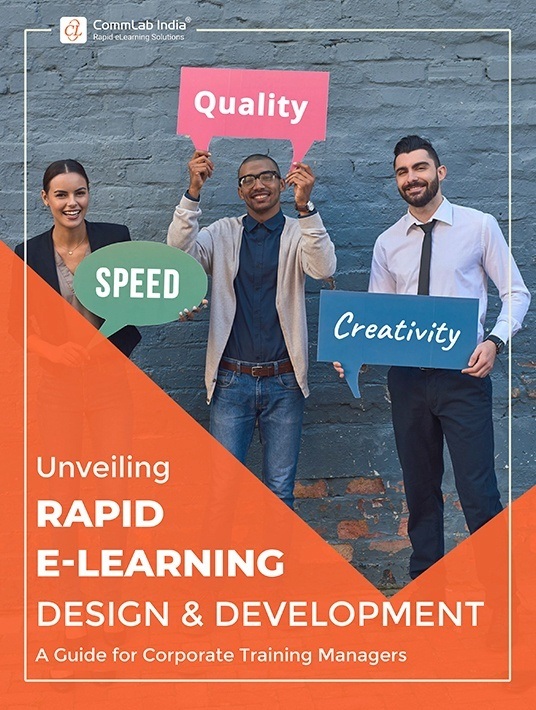Rapid Blended Learning: How To Create A Course On A Tight Timeline
According to Valamis’ Global L&D Survey Comparison, 48% of stakeholders said time is the biggest obstacle for corporate L&D. Instructors don’t have the time to cover all the information that learners need to know; learners don’t have enough time to spend in the classroom on top of their job tasks; and eLearning designers simply don’t have enough time. Period.
It seems that lack of time is the kryptonite for corporate L&D. We can solve this time crunch by reducing classroom training and the time to develop online training. And the best way to achieve this is by combining the powers of blended learning and rapid eLearning.

What Is Blended Learning?
Blended Learning is a training approach that combines synchronous classroom training with asynchronous online learning, offering the best of both worlds. It enables learners to take self-paced learning and interact with instructors face-to-face. The synchronous part of the training can be conducted either through brick-n-mortar classrooms or virtual instructor-led training. And self-paced training can be eLearning, microlearning, or just-in-time performance support.
Rapid eLearning In Blended Learning
Here is how you can use rapid eLearning to develop assets for blended learning – quickly and easily.
1. Balance Classroom and Online Training – Begin with the End in Mind
You can’t simply convert all classroom training to online training without some logic. For one thing, it will create a tremendous load on your eLearning development team. It is also very time-consuming and is not feasible when you have tight deadlines. Second, as much as we hate to admit it, some training is only effective under the guidance of an instructor.
So, the most important part of implementing blended learning is determining when to use classroom training and when to go for self-paced online training. The choice between classroom training vs. eLearning depends on one thing – the training requirement! What is that you want your learners to do by the end of the training?
Download the eBook to evaluate both options and find out when it's best to use classroom versus online training.
2. Go Ahead with Rapid Prototyping – Think Win-Win
Once you have decided on what will be covered through online training, the next step is to create a prototype. This will help you to align the project expectations of all stakeholders and resolve any technical glitches. For instance – if there are conflicting opinions between the SME and the L&D team about course content or design, the prototype will help resolve the issue before the entire course is developed. A lot of time and effort can be saved as you will know exactly what the SME expects from the course. The graphical user interface (GUI) of eLearning courses can also be finalized during prototyping.
3. Convert Existing ILT (Classroom) Material – Demo Quick Wins
If you are an organization looking to adopt a blended learning approach, you most probably have a ton of ILT (instructor-led training) materials already at hand – PPT decks, PDF files, guides, manuals. You can quickly convert these classroom training materials to eLearning and microlearning courses using rapid authoring tools. Here are some tips for quick wins:
- Select a project with high visibility (such as compliance training) to demonstrate the benefits of conversion to online training
- Create a group of pilot users who will test the courses within your organization
- Select a vendor with expertise in converting classroom training material to eLearning/VILT
4. Repurpose VILT Content for Job-aids – Reuse, Recycle, Renew
Blended learning is not just limited to combining online methods with brick-n-mortar classroom sessions. Virtual instructor-led training (VILT) is becoming increasingly popular in recent times. And it has a distinct advantage over traditional classroom sessions in that VILT sessions can be recorded, and later converted into videos that can be used as job-aids.
Learners can post their queries in the chat window during VILT sessions, and these questions can also be used as a knowledge resource. Based on the questions and the discussions that follow, you can create short PDFs and infographics that can also serve as performance support job-aids.
Conclusion
Download the eBook Unveiling Rapid eLearning Design And Development – A Guide For Corporate Training Managers to find the right tools and techniques to launch a rapid eLearning development strategy that works best for your organization. You can also join the webinar to discover the key considerations for high-impact learning.

